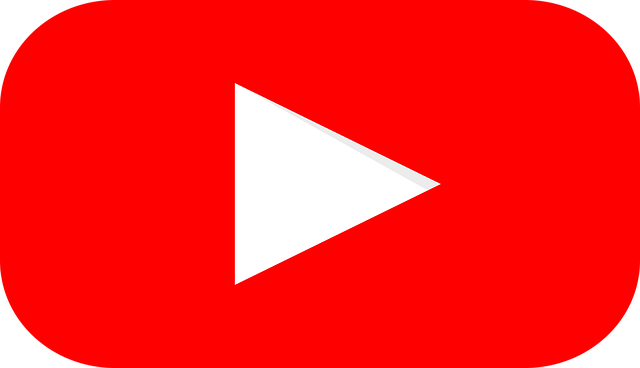Images & Search Engines
Mmm, back from a yummy lunch. Hopefully you guys are still with me. Yeah? Okay, good.
Anne Kennedy is moderating this morning’s afternoon’s Images & Search Engines session with speakers Liana Evans (Commerce360), Chris Smith (Netconcepts), Shari Thurow (Omni Marketing Interactive), Cris Pierry (Yahoo! Search) and James Jeude (Ask.com).
First up is Shari Thurow who adds a disclaimer that she is injured due to a racquetball injury. Okay then.
Shari starts with a search engine optimization review. She says that successful optimization depends on:
- Keyword-rich text. Web pages should contain the words and phrases that your target audience types into the search engines.
- Information architecture and interface. Giving search engines spiders and visitors access to keyword-rich content via information architecture, page layout and URL structure.
- Link development. Number and quality of objective, 3rd party links pointing to a URL.
Because graphic images are made up of bits instead of text the search engines are currently not able to extract keywords out of the images. Therefore, search engines rely on a number of indirect factors to determine the content of a graphic image. They look at primary and secondary text to put the images into context.
- Primary text = Title tags, visible body content, text at the top of a We page, in and around hyperlink links.
- Second Test = Meta-tag content, ALTernative text.
Think about the file names. Files name are rarely used to determine the content of an HTML page because search engine spiders are able to extract text from the actual page. File names are more important for graphic-image optimization than text-file optimization.
In other words:
- Logo.gif is probably a logo image.
- Atm-matchine.jpg is probably an image of an ATM machine.
- Cir1233.gif does not communicate anything. Don’t use it.
Search engines use the text surrounding the image to put it into context and help identify what it is.
Make sure your graphics images are formatted correctly. Name your graphic images in a way that makes sense to your audience. Do not let software (such as Photoshop) name files for you. Use captions or labels to provide contextual clues to images search engines. If you are unable to create captions, make sure the page is optimized for targeted keyword phrase.
Usability counts!
Li Evans is up next to talk about image search as the next frontier for retailers.
Why should you care about image search? Because it’s the fastest growing vertical search, that’s why. Li says that Google’s Universal Search has changed the entire thinking on search engine optimization for images.
Also, searchers and shoppers are visually-oriented. They wanted to "see it" before they "but it". Let them print out your images and take it with them to the store.
How can image search help you?
- Hot Toys: When users search for images the majority of images showing up in the SERPs are coming from manufacturer sites – sites where users can’t buy from. As a retailer, having your image appear for popular product searchers puts you at an advantage over your competition and leads targeted customers to your site.
- Comparison Shopping Engines: Ensure images match products and keywords. Give descriptions of pictures in feed.
- Niche markets: Image Search provides small retailers with another way to increase traffic, better conversion rates, and puts them in a category with less competition from major retailers.
- Contextual Search Engines: Three out of the four major engines incorporate images in with their regular searches (one box, smart answers, etc).
Universal and blended search has changed the rules. Images are now showing up intermixed with the search results. And they’re timely. Google is already showing images of Hurricane Dean in its results.
Eventually more media and images are going to be blended in with your searches. Results can change rapidly. Make sure images are included and named correctly. Send out images with a press release. Place content around images on your site. Create a site map feed of your images for Google and Yahoo.
Images and Reputation management: Search can form an impression of a brand, product or service by the images they view. What does an image say about you? Are your images representing you the right way? Li uses an example for the RIAA. Check out the third image. Methinks they don’t want that showing up for their name.
What matters when optimizing images? The image name, ALT text, content around the images, etc.
Up next is Chris Smith to talk about sharing images to perform search engine optimization for your Web site.
Chris talks about Flickr, saying it has a high PageRank (PR8), and allows users to customize titles, Tags, H1. Links are also allowed.
Chris says that the design of Flickr is advantageous for search engine optimization because each photo has its own Web page with customizable elements like Title tags, Heading tags, captions, tagging, cross-grouping, comments, sharing, ALT text, optimal linking hierarchies and date taken with page views displayed.
Step one for optimizing images is to have good quality pictures to use. Chris says that photos with good contrast tend to work better. Search marketers should also be broad in experimenting with subject matter for pictures intended to drive traffic and conversions. You never know which image will drive the most traffic and conversions to your site. For example, bed and breakfasts could show furniture & decorative art in addition to details on their rooms. Think creatively.
Chris offers up some tips for optimizing through Flickr:
- Add unique title appropriate to image and use keywords when naming.
- Always tag your image with keywords. Be as specific and descriptive as possible.
- Make photos publicly viewable.
- Consider loose licensing for your pictures – people can use the picture if they link back to your site.
- If the photo is location specific, geotag the picture.
- Create thematic sets.
- Use Flickr to host pix for your blog articles.
- Add links to the description field of your Flickr photo page to related pages on your site.
- Post as many pictures as possible into Flickr – more pictures will result in more traffic, which can result in more conversions.
- If you are photoblogging, add a Digg link at the end of your text.
- Post each picture pages over to del.icio.us.
- If taking many location specific pictures, consider using a camera that has built-in GPS, allowing photos to be automatically geotagged.
True image search is revolving. Google is trying to understand images beyond just looking at Meta tags.
Cris Pierry is up next to say a few words.
The search engines are getting better at understanding images but they’re still doing a poor job. The more you can help them with Meta data and contextual information, the better. Ultimately, you also want to use good quality images. If you produce high quality images that the users want, the search engines will find them.
Participate on social networks. Yahoo is using the popularity of the images on that site to help it rank because it calls attention to it.
You’re going to see more and more multimedia inside the normal Web search.
Up next is James Jeude.
How do users search for images and why? Make yourself Image Search Friendly by doing the following:
- Build images to fit your audience’s expected behavior.
- Don’t expect to appeal to multiple image search scenarios simultaneously but you can do so sequentially and separately.
- If your site is fast-moving (tech advice, consumer news, celebrity gossip), try to get inserted and highly ranked as a News/Blog source in the major aggregators.
- If your site is an organization or hobby site, be sure to have iconic images clearly labeled and attractive enough to get links from others.
If appealing to popular terms:
- Make your site "Web search friendly" as a co-requisite to "image search friendly".
- Be clear and direct in the popular terms but add qualifiers if possible (Britney Spears Hair, Paris Hilton Jail) to reward the skilled searcher.
- For your OWN brand name, label your logos and images with your brand name to attract home page traffic.
If appealing to rare terms:
- Make your words clearly labeled on or near the image.
- Filename text is really helpful but not mandatory.
- Alt Text is helpful. For example, if you use "Image Cannot Be Displayed" as Alt Text you’ve missed a text-scoring opportunity.
- Example: caption individual images rather than having a title like "Celebrity Party" with images numbered "IMG0029" or "DSC0047"; name the individual images with the participants in text surrounding the image.
If you are geographically anchored, put your product in geo context. Use addresses in surround text, ALT text of a map image, and give other geo locators such as directions that pass through neighboring towns.
- Consider keeping your misspellings and synonyms in the meta tags.
I recommend not having them in visible text or it will show in Description and make your site look bad. But do use them, if your customers will likely have trouble with proper spelling. - Use descriptive file names if possible.
- If you embed words in an image, try to also have the words as ALT text ("Sale on JVC Everio!")
- If using JavaScript to set up slide shows, you may want to consider also having a page with thumbnails and text around every thumb.
Holy information overload! While you go slip into a knowledge coma, I’m going to grab some water and head to the next section. Stay tuned!
26,000+ professionals, marketers and SEOs read the Bruce Clay Blog
Subscribe now for free to get:
- Expert SEO insights from the "Father of SEO."
- Proven SEO strategies to optimize website performance.
- SEO advice to earn more website traffic, higher search ranking and increased revenue.

One Reply to “Images & Search Engines”
Mmm, back from a yummy lunch. Hopefully you guys are still with me. Yeah?
Just about Mrs / Miss Barone. Tabbing across from here and SERoundtable ;)
LEAVE A REPLY









